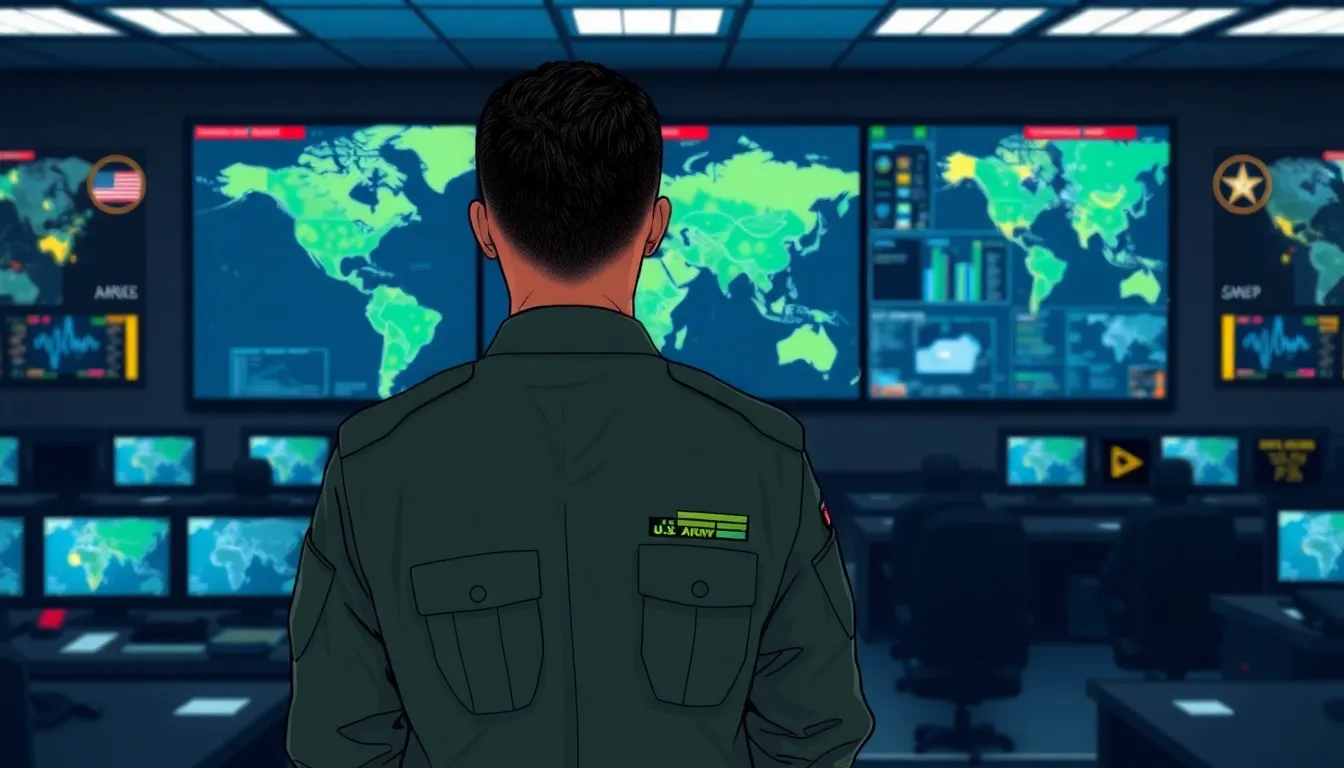The Best Fluffy Pancakes recipe you will fall in love with. Full of tips and tricks to help you make the best pancakes.

World War III News: Escalating Tensions and What They Mean for Global Peace
As tensions rise and global leaders exchange heated words, many find themselves wondering if World War III is just around the corner. With headlines blaring and social media buzzing, it’s hard to ignore the growing unease in international relations. But before you start stocking up on canned goods and building a bunker, let’s take a closer look at the actual news shaping this complex situation.
World War III News
Tensions continue to escalate in various regions, capturing global attention. Ongoing conflicts highlight the complexities shaping these scenarios.
Major Developments
Recent military mobilizations in Eastern Europe signify a shift in regional dynamics. Intelligence reports indicate increased troop deployments along borders, sparking concerns among neighboring nations. Cyberattacks on governmental systems showcase another layer of conflict, disrupting communication and strategic planning. Analysts note that these actions could provoke further retaliatory measures, potentially complicating diplomatic dialogues. Events from the South China Sea reveal maritime confrontations that exacerbate existing hostilities. Countries are navigating alliances, adding to the unpredictable nature of these developments.
Key Players Involved
Global powers are actively engaged in this unfolding situation. The United States maintains a strong military presence in Europe, signaling support for NATO allies. Russia’s assertive posturing demonstrates its commitment to regional influence and power projection. China remains pivotal, backing its territorial claims amid international scrutiny. NATO members coordinate strategies to counter perceived threats while balancing internal diplomatic agendas. Regional actors, including Iran and North Korea, complicate the landscape with their own agendas and military capabilities. Each player’s actions contribute to an intricate web of diplomacy and confrontation.
Analysis of Military Strategies

Military strategies shape global dynamics amid rising tensions. Current events spotlight various military activities impacting international relations.
Ground Forces Movements
Troop deployments in Eastern Europe emphasize escalating military readiness. Nations like the United States and NATO members are increasing their presence in response to perceived threats. Russia, too, has intensified its movements along its western borders, signaling a commitment to assert influence. Reports indicate large-scale exercises and mobilizations that suggest preparations for unforeseen scenarios. Intelligence assessments reveal that these ground forces movements contribute to regional instability and distrust among countries. Each nation’s strategy reflects an intent not just to deter aggression but also to prepare for possible conflicts.
Naval Engagements
Maritime confrontations in the South China Sea highlight naval strategies amidst rising tensions. China’s assertiveness in territorial claims has led to increased naval patrols and military exercises involving its fleet. The United States has responded with freedom of navigation operations, reinforcing its commitment to international waters. Regional allies, including Japan and Australia, collaborate with the U.S. to secure maritime routes and maintain stability. These naval engagements underscore the importance of power projection in strategic coastal regions. Ongoing incidents, such as close encounters between vessels, illustrate the potential for miscalculations despite diplomatic efforts.
Impact on Global Politics
The ongoing tensions significantly reshape global politics. Countries reassess their alliances and strategies in light of potential conflict.
Changes in Alliances
Shifts in alliances emerge as nations respond to rising threats. Some countries gravitate toward traditional partners like NATO, seeking collective security. Others, however, explore alliances with non-traditional actors to counterbalance adversarial influences. Reports indicate a growing collaboration between Russia and China, highlighting a shift toward a more cohesive anti-Western bloc. Meanwhile, countries in Eastern Europe align closely with U.S. military presence to deter aggression. This dynamic alters established political landscapes, prompting nations to redefine their foreign policies for security and economic benefits.
Responses from World Leaders
World leaders exhibit varied responses to escalating tensions. U.S. officials emphasize deterrence through military preparedness and diplomatic engagement. China’s leadership presents a narrative of sovereignty and regional stability, framing its activities in the South China Sea as defensive measures. Similarly, Russian authorities assert legitimacy for their military actions along their borders as necessary precautions. Diplomatic channels remain open, yet prospects for cooperation fluctuate. Public statements from regional leaders underscore a commitment to sovereignty while revealing the delicate balance between diplomacy and potential conflict escalation.
Public Reaction and Media Coverage
Public reactions to the threat of World War III vary widely across different regions. Anxiety permeates discussions, especially when sensational headlines dominate news cycles. Social media amplifies concerns, shaping perceptions of global conflicts and stirring fear of imminent war. Traditional news outlets strive to provide context, yet many headlines focus on dramatic developments that capture attention.
Media coverage highlights crucial events such as military mobilizations and cyberattacks. Reports of troop deployments in Eastern Europe appear frequently, depicting an area brimming with tension. Analysts emphasize the complexity of these situations, urging audiences to engage with fact-based reporting rather than sensationalism. In contrast, digital platforms often prioritize eye-catching headlines, which can misrepresent the severity of events.
International responses display a mix of reassurance and panic. Some governments emphasize the importance of preparedness, ensuring citizens that strategic planning is underway. Other nations, particularly in Eastern Europe, express concern over the growing military presence of external powers. Commentary from experts underscores the delicate balance of diplomacy versus ongoing hostilities.
Public forums and discussions on various platforms reveal a common desire for peace. Many individuals call for diplomatic solutions, advocating dialogue over military confrontation. Grassroots movements campaign for transparency, urging authorities to share accurate information concerning military actions and international relations.
In light of this turmoil, the role of media becomes even more critical. Responsible reporting fosters informed conversations about potential threats, while misinformation can escalate tensions. Governments and organizations must balance national security interests with the public’s right to information, ensuring that narratives reflect reality rather than conjecture.
Conclusion
The landscape of global politics is undeniably shifting as tensions rise and nations reassess their strategies. The potential for conflict remains a pressing concern for many, yet it’s crucial to approach this topic with a level-headed perspective. Sensational headlines may provoke fear but understanding the complexities behind these developments is vital for informed discourse.
As military movements and diplomatic maneuvers continue to unfold, the importance of responsible reporting cannot be overstated. Engaging with fact-based journalism helps to foster a more nuanced understanding of the situation. Ultimately, the desire for peace and stability prevails, underscoring the need for dialogue and cooperation among nations in navigating these turbulent waters.
